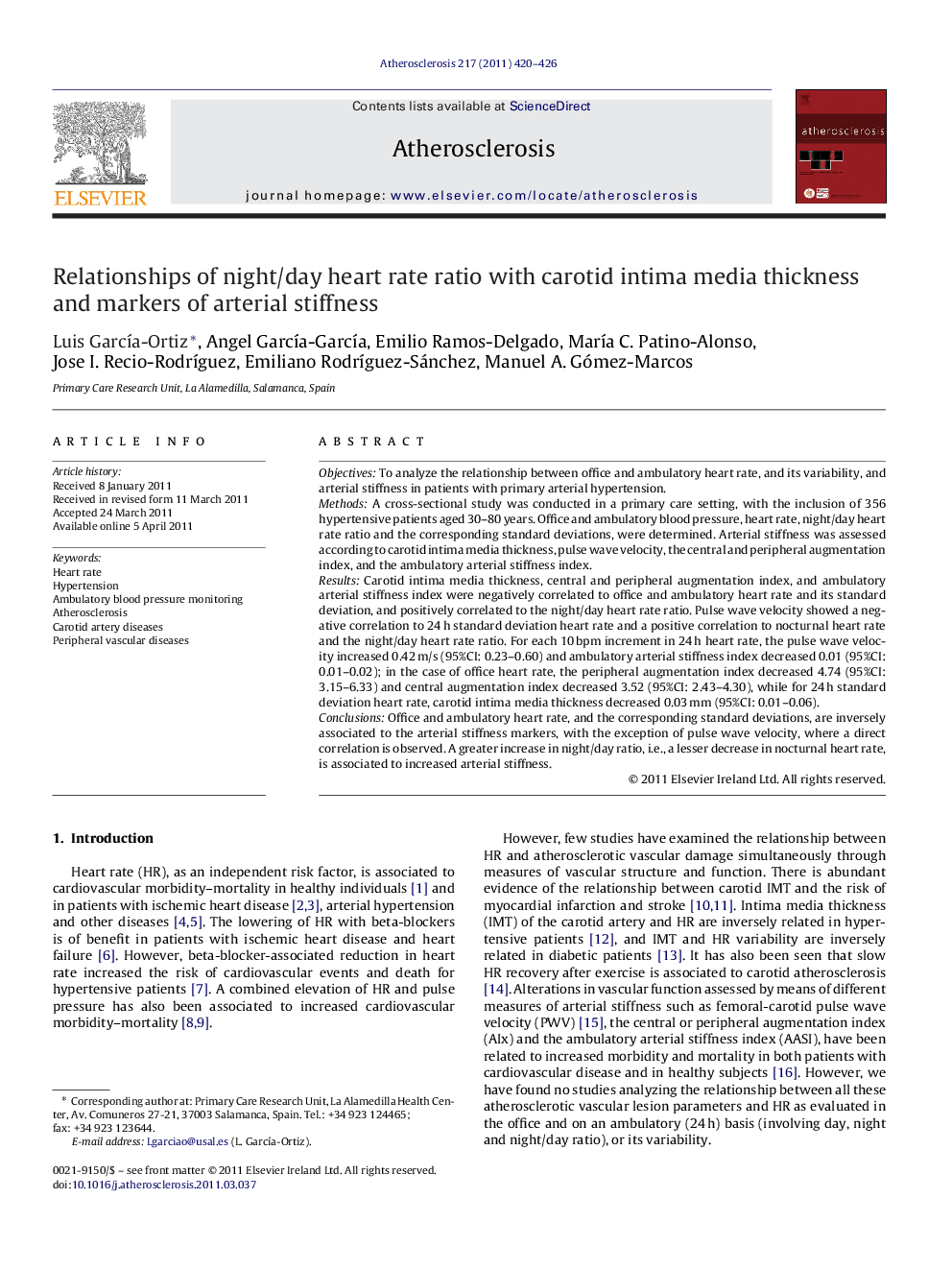| کد مقاله | کد نشریه | سال انتشار | مقاله انگلیسی | نسخه تمام متن |
|---|---|---|---|---|
| 2892791 | 1172386 | 2011 | 7 صفحه PDF | دانلود رایگان |

ObjectivesTo analyze the relationship between office and ambulatory heart rate, and its variability, and arterial stiffness in patients with primary arterial hypertension.MethodsA cross-sectional study was conducted in a primary care setting, with the inclusion of 356 hypertensive patients aged 30–80 years. Office and ambulatory blood pressure, heart rate, night/day heart rate ratio and the corresponding standard deviations, were determined. Arterial stiffness was assessed according to carotid intima media thickness, pulse wave velocity, the central and peripheral augmentation index, and the ambulatory arterial stiffness index.ResultsCarotid intima media thickness, central and peripheral augmentation index, and ambulatory arterial stiffness index were negatively correlated to office and ambulatory heart rate and its standard deviation, and positively correlated to the night/day heart rate ratio. Pulse wave velocity showed a negative correlation to 24 h standard deviation heart rate and a positive correlation to nocturnal heart rate and the night/day heart rate ratio. For each 10 bpm increment in 24 h heart rate, the pulse wave velocity increased 0.42 m/s (95%CI: 0.23–0.60) and ambulatory arterial stiffness index decreased 0.01 (95%CI: 0.01–0.02); in the case of office heart rate, the peripheral augmentation index decreased 4.74 (95%CI: 3.15–6.33) and central augmentation index decreased 3.52 (95%CI: 2.43–4.30), while for 24 h standard deviation heart rate, carotid intima media thickness decreased 0.03 mm (95%CI: 0.01–0.06).ConclusionsOffice and ambulatory heart rate, and the corresponding standard deviations, are inversely associated to the arterial stiffness markers, with the exception of pulse wave velocity, where a direct correlation is observed. A greater increase in night/day ratio, i.e., a lesser decrease in nocturnal heart rate, is associated to increased arterial stiffness.
Journal: Atherosclerosis - Volume 217, Issue 2, August 2011, Pages 420–426